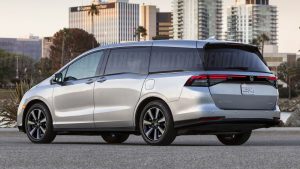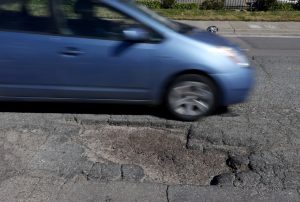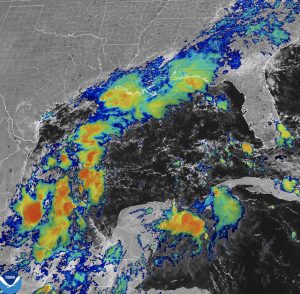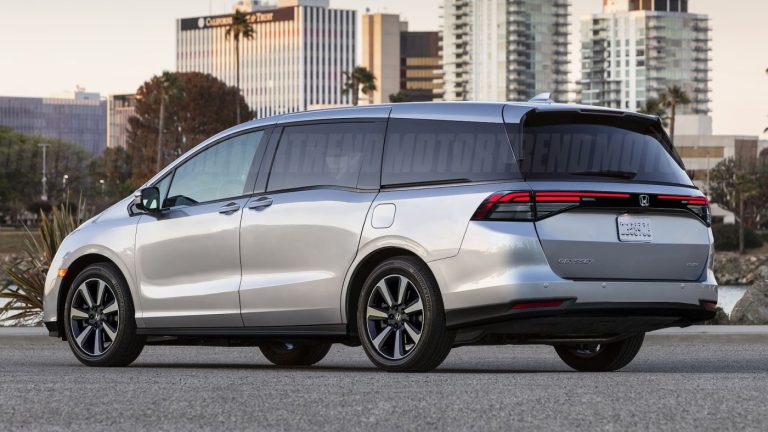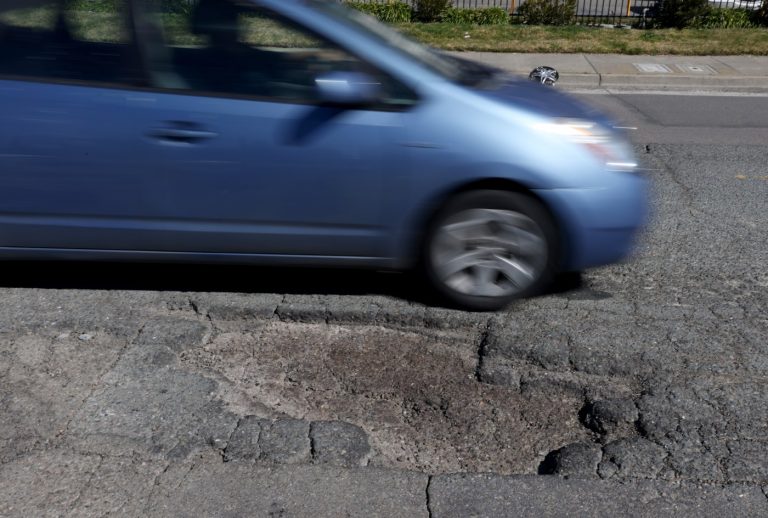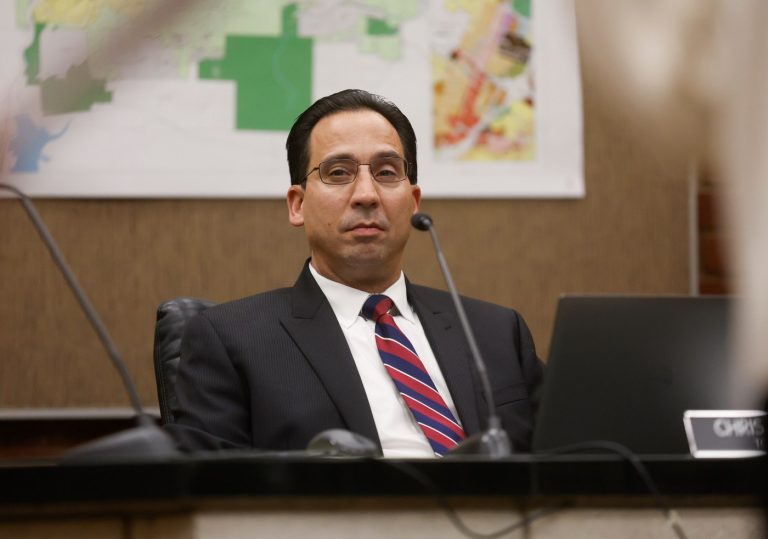Tope Alake and David R Baker | Bloomberg News (TNS)
Charging an electric vehicle in the future increasingly looks like an experience somewhere between a truck stop and an airport lounge.
Most public chargers sit in parking lots, often three or four machines along the side of a hotel or grocery store. Drivers are exposed to the elements and — unless they need to go shopping — are basically stuck hanging out in their cars while filling their batteries.
But charging companies and automakers increasingly see a need for stations with amenities: restaurants, good bathrooms, comfortable furniture, and canopies that shield from the rain, snow and sun. After all, even the fastest chargers need a half-hour to top off your car — so you’d better enjoy the stay. The additional convenience could entice would-be EV drivers to take the plunge, adding fuel to the electric transition.
The transition to charging could be an opportunity to reimagine the refueling experience altogether, said Christopher Hawthorne, senior critic at Yale School of Architecture. The design and placement of gas stations have remained largely unchanged for decades, but EV charging facilities don’t necessarily have to follow the same rules.
This summer, Rivian Automotive Inc. turned a former blacksmith shop outside Yosemite National Park into a recharging lounge where drivers can sip free coffee while making their own trail mix from an ingredients bar. Or they can sprawl out on furniture made from used sleeping bags and browse books in an onsite library. There’s even a wall-sized display of climbing routes of Yosemite’s famed El Capitan rockface.
In dense, urban San Francisco, Electrify America LLC opened a drive-in station where 20 high-speed chargers sit inside a large, garage-like space that also includes two climate-controlled lounges, free wi-fi and bathrooms with baby-changing stations. That represents a large chunk of the city’s fast-charging ports.
These are just two of a growing number of efforts to find public charging models that work. Some drivers considering going electric remain skeptical that they’ll find convenient and reliable charging beyond their own garage. Indeed, it’ll be eight years before EV chargers become as ubiquitous as gas stations today.
Hunting for chargers outside individual stores isn’t much of a draw. Lounges accompanied by banks of chargers are one potential answer. So are stations that mimic their gas-dispensing predecessors, with pull-through lanes, bright lighting and broad canopies easily visible from the street. EVgo Inc., in partnership with General Motors Co., plans to install 400 fast chargers at such facilities.
“We don’t want people to think of charging infrastructure as anything that would hold them back — we want them to be thrilled by the infrastructure that they have available to them,” said EVgo President Dennis Kish. “Going that extra mile on these sites is a way of making investments we think will really accomplish that goal.”
He also noted that “without question,” the company is seeing more usage and higher customer satisfaction with its more developed charging sites. Stations with additional amenities increase customer safety and deter the growing problem of charger vandalism, he added.
Offering products from soda to chewing gum will appeal to the charging station operators as competition for customers intensifies, said Gabriel Daoud, an analyst at TD Cowen.
“Over time, charging is expected to become like the gas station model where you make little margin on the fuel, but profit on the other services provided,” Daoud said. “Ultimately, it’ll have to be paired with a convenience store to help improve the economics.”
Related Articles
Taxpayers in California and 23 other states will be able to file their returns directly with the IRS in 2025
US Supreme Court will hear woman’s claim she lost out on jobs because she is straight
US adds a robust 254,000 jobs and unemployment dips to in sign of still-sturdy labor market
How ‘soft’ auction added $32 million to price for California icon
Former Bay Area labor organizer uses tech to help governments better support people in poverty
Tesla Inc. pioneered the charging lounge design in 2017, opening one along the main freeway between Los Angeles and San Francisco featuring company swag for sale and a barista making espresso drinks as well as a place for dogs to do their business. But centralized facilities have been the exception rather than the rule: A number of charging veterans still see installing chargers at restaurants, shops, public attractions and other places people want to go, allowing them to run errands and charge at the same time.
Rick Wilmer, chief executive officer of ChargePoint Holdings Inc., said the trick will be helping drivers find charging in advance of a trip to the store or the beach and know that a charger will be there, waiting for them. But flagship stations have benefits, for both drivers and EV companies. Rivian’s “Yosemite Outpost” speaks to the target audience of its electric trucks and SUVs: outdoor enthusiasts. The company plans to build more stations like it, though it hasn’t said how many or where.
“It’s not just about the revenue,” said Paul Frey, the company’s vice president of battery, charging and adventure products. “It’s really about defining us, one of the elements that helps define us as a brand and getting people to connect to the brand.”
Electrify America, in contrast, solely handles charging. But its San Francisco facility, in the downtown SoMa neighborhood, addresses a problem that has long plagued EV adoption in cities.
“It’s hard to find charging in a place like downtown San Francisco and super-urban environments,” said Anthony Lambkin, the company’s vice president of operations. “You have a lot of people who drive EVs who are in multi-unit dwellings. And so this station really meets a need.”
A centralized facility gives them a place they know they can go.
There are currently about 40 stations with more than 170 chargers in all of San Francisco, according to Department of Energy data. Electrify America’s lounge is the second-largest station in the city, and the company will build similar facilities in other cities, Lambkin said. But it won’t be the only charging model the company pursues. Centralized facilities with lounges are more expensive and complicated to install than individual chargers, requiring more electricity and space. According to a 2022 BloombergNEF report, a 350-kilowatt fast charger cost an average of about $77,000, with prices higher in the U.S. than Europe and Asia. Electrify America declined to say how much such stations cost, though.
The company is also installing chargers at old-fashioned gas stations whose owners want to ride out the EV transition.
“I don’t see gas stations going away anytime soon,” Lambkin said. “We will refer to them as ‘fueling stations’ instead.”
Utilization of public chargers increases almost three-fold when they’re closely located to dining services, according to a survey by the Next 10 climate think tank and the University of California, Davis’ Institute of Transportation Studies. The authors added that drivers in California are 37% more likely to choose charging sites with amenities than standalone locations.
At the same time, companies and urban planners designing charging stations today should expect that the time needed to top up a battery will likely fall as the technology improves. So while the airport lounge approach is coming in vogue today, companies still need to keep an eye on the future.
“How can we design a charging station that will work when it takes 45 minutes to charge a vehicle but also might work when it takes five or 10 minutes?” said Hawthorne, the Yale critic who previously served as the chief design officer for the city of Los Angeles. “It makes it a really unique challenge.”
(With assistance from Kara Carlson.)
©2024 Bloomberg L.P. Visit bloomberg.com. Distributed by Tribune Content Agency, LLC.


